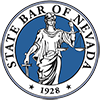
Surveillance and Claim Investigations
Disability insurance companies often use surveillance tactics during the claims process to determine benefit eligibility. Insurers claim that surveillance is used only as a fraud prevention tool to ensure that a claimant’s disabilities are legitimate. However, in some cases, surveillance is also used to deny claims. Private investigators are often employed by disability insurance companies to observe claimants’ activities. They often interview friends and family, interview co-workers, follow claimants on social media, and collect a paper trail of information related to claims. Insurers and investigators routinely contact claimants’ physicians and request medical records that pertain to a disability diagnosis. Although these procedures are used to confirm proof of disability, they are also used to find conflicting evidence that gives insurers a reason to deny disability claims.
An insurance company’s investigators employ a number of different tactics during surveillance of claimants. Photos, videos, and social media posts are commonly used as tools to approve or deny disability claims. Even when evidence shows that a claimant’s activities are consistent with his/her disability, a photo or video clip may raise conflicting issues. Insurers can use this information to deny new benefits or terminate existing benefits. When this occurs, proving that the disability is legitimate falls to a disability insurance attorney who must file an appeal or lawsuit against the insurer. This process can drag on for months, delaying a claimant’s monthly disability benefits that impact his/her health and finances.
Common Surveillance Tactics
There are common surveillance tactics used by disability insurance companies and investigators to follow claimant activities. Individuals who file for disability insurance benefits should be aware of these tactics to determine if they are under surveillance.
Social Media
Monitoring a claimant’s activities through social media sites like Facebook, Instagram and Twitter is a popular surveillance tactic used by disability insurance companies. Many companies hire tech-savvy people to search well-known social media websites for photos, videos, and posts that can be used to determine a claimant’s eligibility for benefits. They look for patterns in daily activities and time frames. As a protective measure, claimants should adjust social media privacy settings that allow only approved people to view profiles, photos and videos, and posts and stay aware of common dangers of social media.
Interviews
One of the most common signs of surveillance is when an investigator conducts personal interviews with a claimant, a claimant’s co-workers, or a claimant’s friends and family members. During an interview, questions may be asked about a claimant’s daily activities, and how the disability impacts work and daily tasks. An investigator may also take photos of a claimant for the insurer’s files. These requests may seem harmless, but they’re often used to help investigators conduct more effective surveillance. The purpose of taking photos of a claimant is often to help investigators identify a claimant when he/she is out in public.
Phone Calls
Claimants who are under surveillance often receive telephone calls from unusual phone numbers. Claim investigators will sometimes call phone numbers associated with a claimant or a claimant’s family members, then hang up when someone answers the phone. This tactic is used to determine whether a claimant is at home or find out their location so surveillance can be conducted properly. Claimants should be suspicious of unusual phone calls from unknown numbers and callers, especially when calls occur frequently.
Vehicles Parked Near the House
Claim investigators often watch a claimant’s home to get photos or videos of activities performed by the claimant in the house or in the yard. It’s not uncommon for investigators to spend hours in a parked car outside of a claimant’s home. To prevent being seen, investigators often put blackout shades in their windows and remove their license plates while parked near the house. An unfamiliar vehicle parked on the street near a claimant’s house for long periods of time may signal surveillance activities. Claimants who notice this type of suspicious activity should close their draperies and avoid activities in the front yard.
Vehicles Following a Claimant
Another common surveillance tactic used by investigators is following claimants as they perform daily activities outside of the home. An investigator may follow a claimant for hours in a car just waiting for the perfect opportunity to take a photo or video without being seen. Like home surveillance, following a claimant creates opportunities to catch a claimant performing an activity that conflicts with his/her disability. Claimants who suspect they are being followed should take precautions and engage in safe driving practices to avoid car accidents and injuries. It’s best for claimants to return home and report suspicious activities to their disability insurance attorney.









